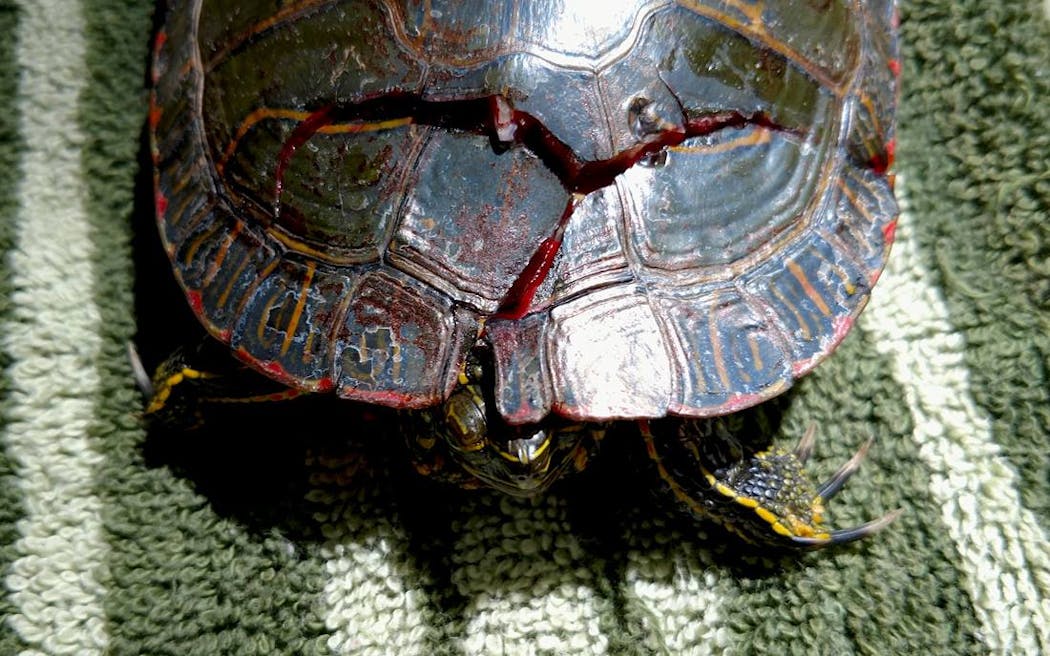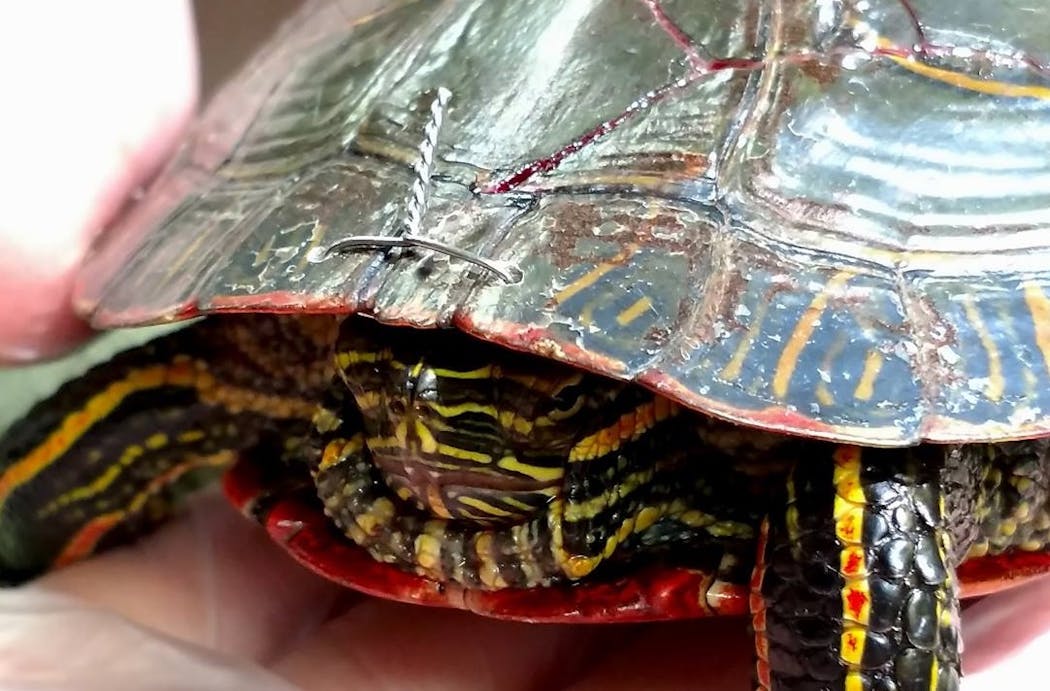Why did the turtle cross the road? No, this isn't the start of a bad joke, it's a serious problem for turtles this time of year as they risk their lives crossing Minnesota's roads looking for love.
"Right now, turtles are about as frisky as turtles ever get," says the Wildlife Rehabilitation Center (WRC) of Minnesota.
As they move to find their summer and breeding areas, more turtles are being hit by cars and the WRC has been busy repairing dozens of cracked turtle shells.
Here's a look at the handy repair work of a western painted turtle that was put back together by Dr. Agnes Hutchinson at the WRC.
A cracked shell is painful for a turtle, so they are put on pain medication and anesthesia for the shell repair surgery.
These are "troubled turtle times," according to the Minnesota Department of Natural Resources. Roadway mortality is believed to be a major factor in turtle population decline throughout the United States.
Helping these turtles cross the road, therefore, is an important job and Minnesota drivers can help. First things first? Drive less like a hare and more like a turtle.
Here's what to do, via the DNR and WRC:
1. Pull off the road and turn on your hazard lights to alert other drivers to slow down.
2. Avoid excessive handling, which can disrupt normal behavior. Prolonged examination of turtles should therefore be limited to only one or two individuals of each species.
3. When turtles can safely cross roads unaided due to a lack of oncoming traffic, allow them to do so. Observe from a distance and avoid rapid movements, as doing otherwise will often cause turtles to change direction, stop, or seek shelter within their shells.
4. If necessary, pick up the turtle (except snappers and softshells) gently along the shell edge near the mid-point of the body. Beware: many turtles empty their bladder when lifted off the ground, so be careful not to drop them. For snapping turtles, handle with a rubber floor mat, a stick or a snow shovel.
5. Always move turtles in the same direction they were traveling in when encountered and avoid moving them to a nearby waterbody.
6. Document your find. Help the DNR document turtle crossing and mortality areas by participating in the Minnesota Turtle Crossing Tally & Count Project.
7. If you find an injured turtle, bring it to the WRC. Even if they can't be saved, the WRC can humanely euthanize them, whereas they can take several days to die on their own.
Sources: Minnesota Department of Natural Resources and Wildlife Rehabilitation Center of Minnesota.
John Lithgow takes on the role of the new kid in school for a PBS special celebrating arts education
Movie Review: A lyrical portrait of childhood in Cabrini-Green with 'We Grown Now'
Judge declines to dismiss lawsuits filed against rapper Travis Scott over deadly Astroworld concert

Summer Movie Guide: Virtually all the movies coming to theaters and streaming from May to Labor Day



